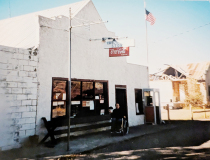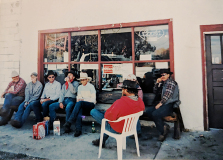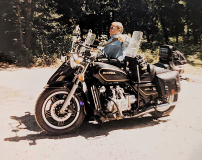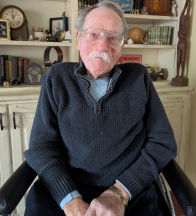No products in the cart.
The High Lonesome

Stories from a Life
By L. Scott Hancock
Photos courtesy of Colleen Hancock
Editor’s Note: Last March, IDAHO magazine ran a Spotlight City feature on Island Park written by L. Scott Hancock. It was an evocative tale of his boyhood experiences and lifelong affinity for the place. During this work, Scott confided he had a terminal condition and would not live much longer. He passed away on May 18, 2025. He was seventy-eight.
Scott was originally from southeastern Idaho but he lived for years in northern Idaho, where he owned and operated a building company. In an obituary in the Bonner County Daily Bee, his widow Colleen Hancock wrote, “Scott never thought himself a great writer. ‘There are so many others that do a much better job,’ he would say. ‘These are just silly little stories anyone could write.’ How wrong he was! I received a card the other day from one of his readers which read, in part, ‘I love Scott’s Island Park News articles and I love his books. He paints the stories of his life with his words.’ That is the difference. That is what made his ‘silly little stories’ worth someone picking up the paper and looking for his next article. Scott was a man of so many talents, self-taught in most cases, and learned, because as a young child with polio, he could either wallow in the circumstances or enrich his life, and that is what he did.”
His story last spring for IDAHO magazine was reprinted in the Island Park News, for which Scott wrote many columns over the years that have been assembled in three collections, the latest of which has just been published and is available at Amazon and Barnes & Noble.
In a review of the first volume of his collected tales, Scott’s friend Kevin Keating wrote: “He comes across as who he is. A coffee drinkin’, real cowboy, and a gritty outdoorsman. His feet (and wheels) have been on more mountains, next to more rivers, and in more Idaho backcountry with bears, elk, and other critters than any outdoor guide. He can tell you as much about guns—because he’s shot most of them—as he can about poetry and politics.
“He was a builder for years, architecting some masterpieces, from a log home mansion to a one-of-a-kind pyramid house. Those are another story. He’s talked to more regular Joes than the best glad-handing politician. He’s got the quickest wit in the West. Yet is artful with his words. He’s a highly opinionated, gentle soul. He inherently advocates for what’s right. Yes, Scott is by definition a Renaissance man. I am better for having shared time with him. The stories are just a bonus.”
Colleen Hancock gave us permission to reprint the story that follows, which originally appeared in the newspaper and appears in the new Volume Three of his collected stories, Tales from the High Lonesome.
Scott and Colleen.

Landscape near Kilgore, one of Scott's haunts.
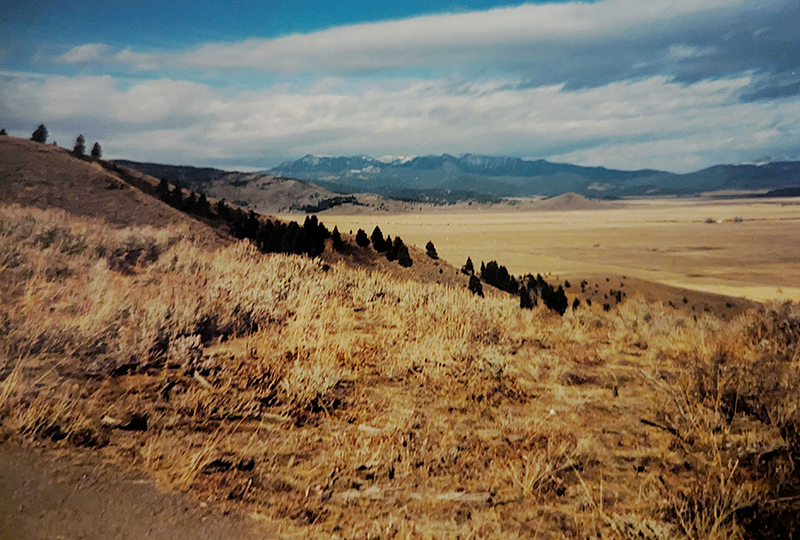
The general store at Kilgore.
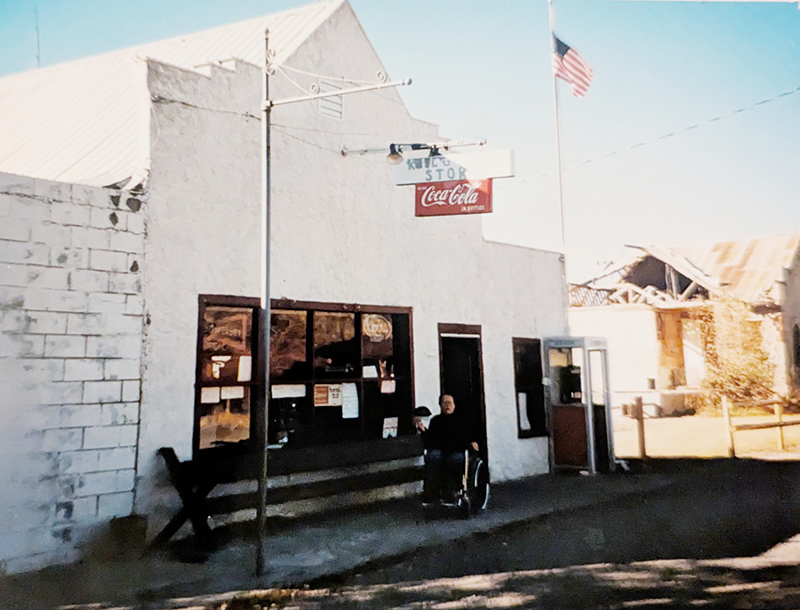
Friends outside the store.
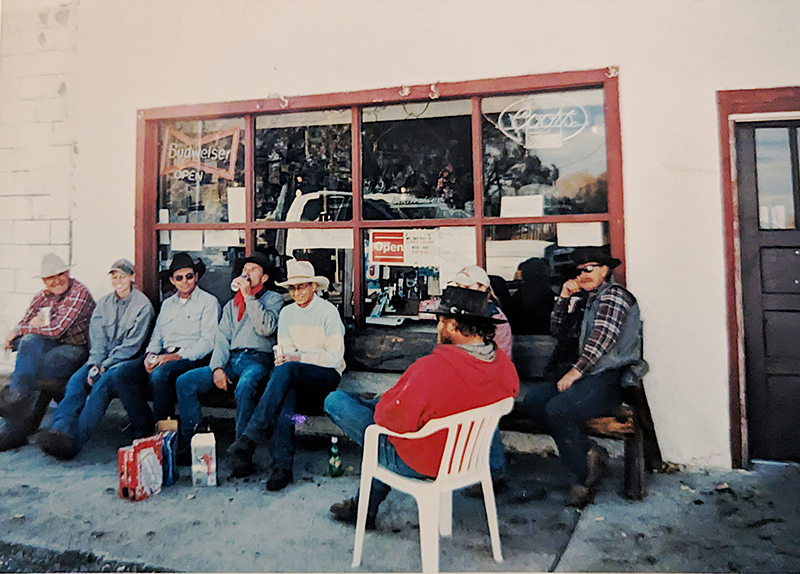
Scene from northern Idaho, where Scott lived for years.
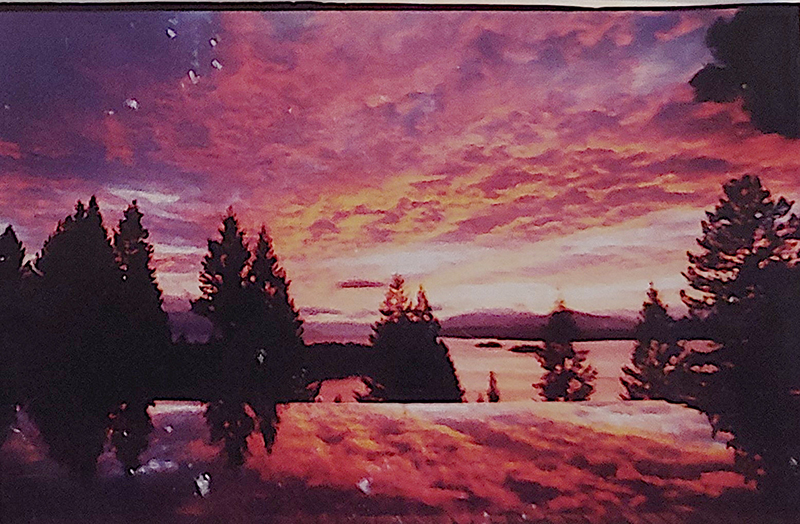
A northern Idaho home with an infinity pool built by Scott's company.

The author with his ride.
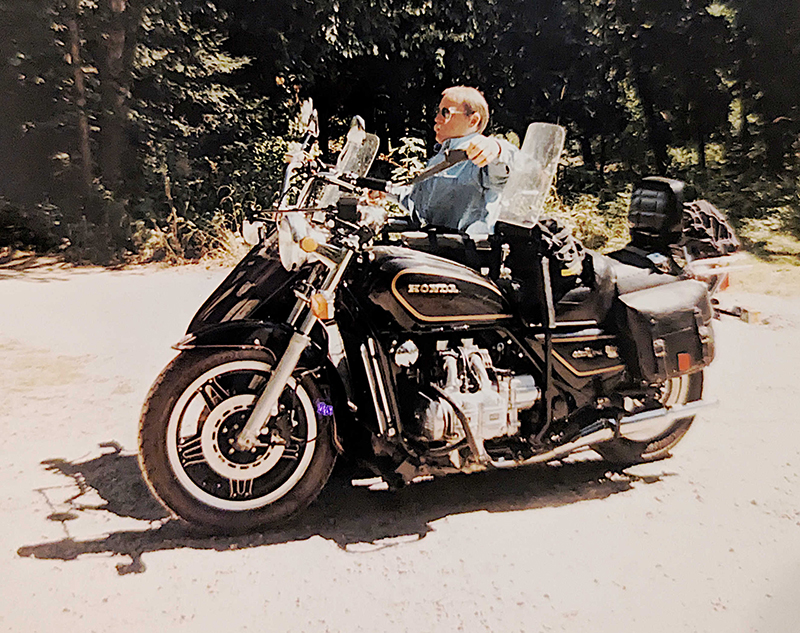
Shadow People
When on rare occasions while I was growing up, my parents and I went to downtown cafés for burgers, or for the folks to have coffee and cocoa for me, there were always the same people who seemed to be in their regular seats hunched over coffee. Sometimes reading the paper, often filling in crossword puzzles.
I didn’t know then that these people had “family” in those restaurants. The staff and friends who came by daily were their family. It was years later I learned where some of these shadow people lived, and how they made it through their days.
One of the first who came into focus was Watermelon Charlie, who lived in the back of Eve’s Café on Center Street in Pocatello. Charlie’s life is painted in part in my first book of Tales. Charlie was one of those folks I think we describe now as “fallen through the cracks.” A euphemistic way of saying they don’t fit in.
Old Bill in Coeur d’Alene was much the same. Each day as I wheeled down Fourth Street to my job in the old Wigett Building, he would disappear behind a door that led to the bowels of that building, below the sidewalk level. Bill lived in the basement boiler room of that old three-story beauty, the first in town to have an elevator.
One day, Bill allowed me to look down the stairway to the basement. I was brain-claustrophobic as I stared. The stairway was just wide enough to descend if you turned your shoulders sideways a bit. Later, a friend and owner of the building told me Bill had lived there since they were in high school together, because he had no place else. His adoptive parents had died and left Bill alone.
Bill took over maintenance chores for the building and became Coeur d’Alene’s own Phantom, living alone with his radio and small TV, only coming out on the sidewalk to quickly enter a side door that took him into the main part of the building. The two other times Bill came out were for food at the old Merrill’s Café, and for church on Sunday. We became friends, but like so many others in life’s lane, you lose track of their lives when moves take you elsewhere.
Yesterday, I was in Pocatello, moseying along the streets towards what is now called Antique Alley. Fashionable antique stores now occupy the old Woolworth’s and other Main Street stores of the day. Stores that became delights in my childhood. It surprises me every time I’m on Main Street as to how little the current occupant/renters know about the area they now inhabit. Looking out across the street to a two-story rock building façade, I read the word “Carlyle.”
As I read the raised stone letters, I remembered Sandy. Sandy lived upstairs in the Carlyle when I was a kid. Every day he did chores to pay for his coffee and food at the Old Timers Café on Main. A favorite of railroad workers, it was crowded any time of day. Countless times I watched rail workers pick up Sandy’s ticket, paying for it along with their own. In those days it seemed every town had shadow people that other folks respected and cared for.
One Christmas back in Pocatello, spending the holidays with my family, I went downtown shopping. It was cold as hell, as Pocatello is that time of year, with the ever-present breeze making the cold colder. I went into the Old Timers for coffee and pie.
Not long into my coffee sipping, with a second bite of pie in hand, I looked up as the cold wind blew in through the doorway to see a very gray and stooped Sandy. He was greeted by a whole new set of rail employees and downtown regulars. My heart gladdened.
The little town of Rathdrum, northeast of Coeur d’Alene, had its own special character in Sarge. Sarge was really Bobby, who performed a variety of tasks for locals, strong as a bull with a gentle soul. Each night Bobby went around to the local bars, where he was fed and given Shirley Temples, as he filled the revelers with the doings of the town.
When Sarge entered these establishments, wearing his trademark Cavalry hat with sergeant stripes, his greeting was much like Norm’s on the TV show “Cheers.” Everyone yelled, “Bobby!” and watched the grin fill his face as he waved a greeting. Bobby lived on the edge of polite society, as they like to think of themselves, and was loved beyond any measure of what the local elite could ever hope to obtain.
And now, in Blackfoot, I see the same people sitting at the morning coffee counter in Martha’s Café, or across the street getting tacos at El Vaquero, or down the street a bit further at Smokin’ Gun BBQ. They are the same people, just different towns with different names.
Every community has shadow people. Finding a public family that accepts them, expecting nothing more than a nod, small talk, and a smile over a plate while morning coffee aroma steams the air, they slide into place where they belong.
This content is available for purchase. Please select from available options.
Purchase Only
Purchase Only



